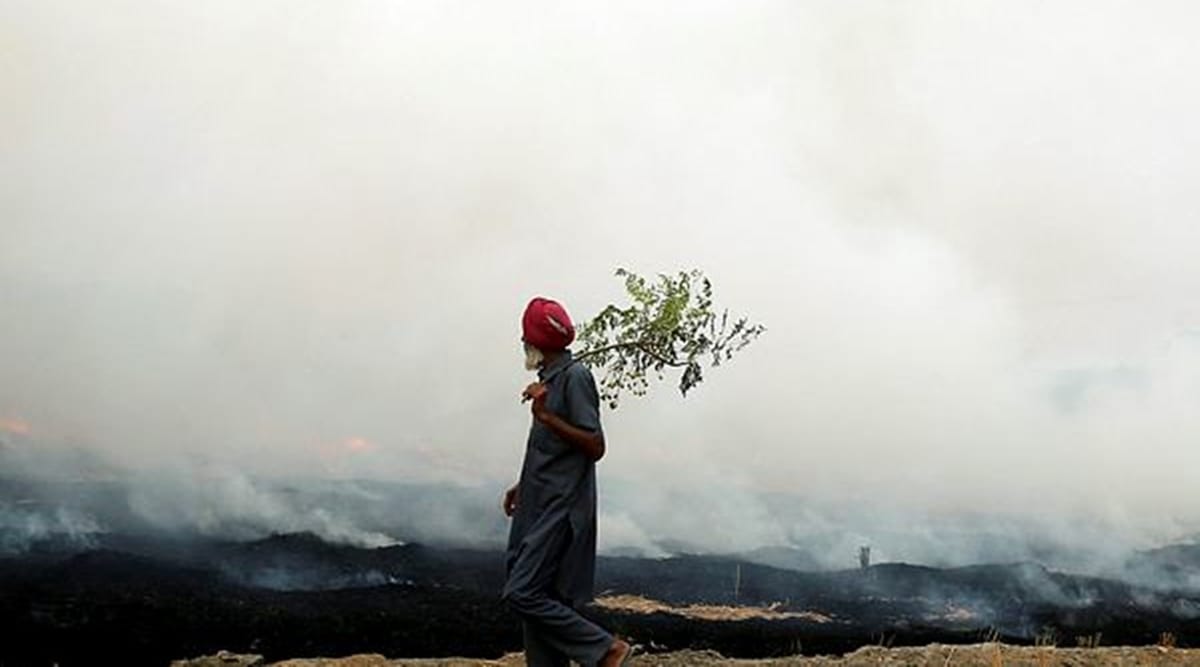 A total of 139 of crop residue burning events were detected in Punjab and one was detected in Haryana from September 15 to 29. (Archive)
A total of 139 of crop residue burning events were detected in Punjab and one was detected in Haryana from September 15 to 29. (Archive)The withdrawal of the monsoon from Delhi and Punjab earlier this year compared to last year is likely to have an impact on air quality this winter.
According to the forecast issued by the Air Quality Early Warning System Thursday, the air quality is likely to be in the ‘moderate’ to ‘poor’ category on October 2. Surface winds, mostly coming from the Northwest direction, are likely to be calm in the morning hours of October 1 and 2, the forecast indicates. The Graded Response Action Plan (GRAP), which chalks out measures to be taken based on the air quality index (AQI), will kick in from October 1 this year.
The AQI has been deteriorating steadily from September 26 onwards when it was 100. The AQI on Thursday was 151, in the ‘moderate’ category. The AQI is likely to deteriorate but will remain in the ‘moderate’ category on Friday, according to the forecast. Last year, the AQI was in the ‘satisfactory’ category on September 29 and 30.
Gufran Beig, founder project director, SAFAR (System of Air Quality and Weather Forecasting and Research), said, “Withdrawal of the monsoon means calm wind conditions are likely to start prevailing. This stagnation is also the reason for air quality being in the moderate category now. In the first week of October, the air quality could get into the poor category, which points to moderate deterioration of air quality earlier than last year. Early deterioration of air quality is likely to start due to the earlier withdrawal of the monsoon compared to last year. Had it been a late withdrawal, these conditions would have been in the winter leading to extreme pollution events.”
The IMD declared withdrawal of the monsoon from Delhi and Punjab on October 8 last year, a little more than a week later than September 29 this year.
Delayed monsoon withdrawal and western disturbances brought rainfall and a ‘good’ AQI day to Delhi in October, on October 18, last year.
Anumita Roychowdhury at the Centre for Science and Environment said, “Last year, we saw that because October was a very wet month, a lot of the stubble burning was postponed to early November. This year we have to see whether that will change in any way. It also depends on how early the winter inversion conditions will set in. It’s speculative at this moment.”
Meanwhile, bulletins issued by the Indian Agricultural Research Institute’s Consortium for Research on Agroecosystem Monitoring and Modelling from Space show that there have been 141 crop residue burning events from September 15 to 29. A total of 139 of these were detected in Punjab and one was detected in Haryana.
Beig added: “If stubble burning is similar to what it was last year after October 10, we might be able to see further deterioration of air quality from the third week of October.”
Low-level easterlies and a western disturbance could bring light rainfall to Delhi on October 4 and 5, according to R K Jenamani, scientist, IMD. The Air Quality Early Warning System indicates that AQI is likely to improve on October 4.